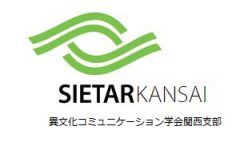2015 SIETAR Kansai July Meeting
How to write Journal Articles in Japanese: Workshop by the Journal Committee
Presenters: Dr. Mayumi Kubota (Kansai University)&
Dr. Noriko Nakagawa (Ryutsu Kagaku University)
Date & Time: Saturday, July 4th 2015, 14:00-17:00 (We may end earlier than 17:00)
Venue: Takatsuki Sogo Shimin Koryu Center, 3F, Room 1.
(one minute from JR Takatsuki Station)
Tel.0726-85-3721
http://www.city.takatsuki.osaka.jp/db/kurasu/images/koryu.gif
Fee: Members free, non-members 500 yen
Language: Japanese
Workshop Abstract:
This workshop is designed for anyone who is interested in publishing an academic article in Japanese. During the workshop, we will have you work in groups to discuss what needs to be done to make the article publishable. We will tackle the issues in regard to publishing academic papers, such as contents, organization of manuscript, development of argument, citation, reference list, etc. by analyzing one article. We also hope to discuss the participants’ needs, and talk about the future direction of intercultural communication research. If you are interested in participating, please register in advance by emailing:mkubota@res.kutc.kansai-u.ac.jp
Profile
Dr. Mayumi Kubota: Mayumi is Professor in the Faculty of informatics at Kansai University. Mayumi is currently co-editor of the Journal of Intercultural Communication. She graduated from the Department of Speech Communication at Indiana University in 1991. She has published Aizuchi wo Ikasu (2001, Koseido), Intercultural Communication-Global mind and local affect (co-authored with Yashima, T. 2012, Shohakusha), Intercultural Communication Encyclopedia (edited by Ishii, S., Kume, T., etc, 2013, Shunpusha).
Dr. Noriko Nakagawa: Noriko is Professor in the Faculty of Human and Social Sciences at Ryutsu Kagaku University. Noriko is currently a co-editor of the Journal of Intercultural Communication. She received her Master’s degree in the Department of Speech Communication at Portland State University, and her Ph.D. at the graduate school of Kwansei Gakuin University in the field of Sociology. She has published Ningen kankei no gaming simulation (edited by T. Fujihara, 2007, Kitaojishobo), Gendai nihon no communication kenkyu (Communication Association of Japan, 2011, Sanshusha), Intercultural Communication Encyclopedia (edited by Ishii, S., Kume, T., etc, 2013, Shunpusha).
